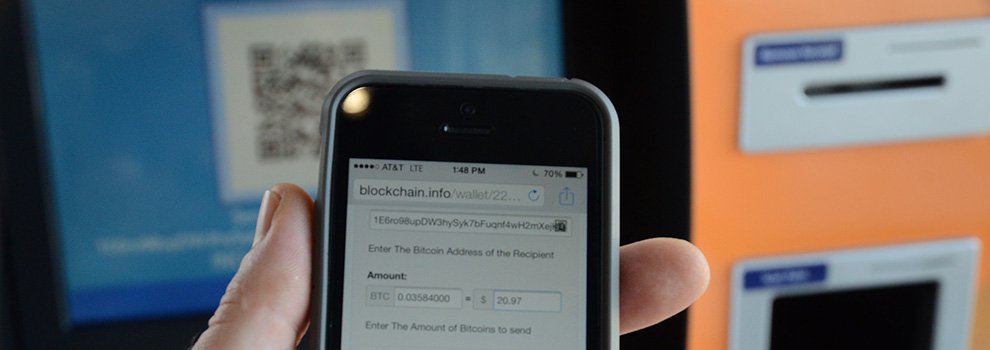Andreas Antonopoulos Thinks Bitcoin ATMs Need to Be Completely Redesigned
Mastering Bitcoin Author Andreas Antonopoulos recently gave at talk at Harvard’s i-lab, spending much of his time in front of a small audience describing the various issues with Bitcoin as a brand. He noted many problems with the terminology used in Bitcoin, and he also focused on specific products or services in the Bitcoin space that seem to be doing a disservice to potential users.
At one point during the presentation, Antonopoulos turned his attention to Bitcoin ATMs, asking the audience how many of them had used one of the machines in the past. While a few people raised their hands, those hands went down when Antonopoulos then asked how many of them enjoyed their experience with the Bitcoin ATM.
How Traditional ATMs Work
To explain the user experience issues with Bitcoin ATMs, Antonopoulos first talked about the setup of traditional bank ATMs:
“When you interact as a person with an ATM, 1. you have a pre-existing relationship with the bank or financial institution; 2. you have a pre-existing balance; 3. your primary objective is to get in, get cash, [and] get out. Twenty seconds is too long. Three clicks is too long.”
In other words, there is no need for long explanations or user-onboarding with traditional ATMs. Everyone who uses them already has a debit card, and they’ve already interacted with the corresponding bank in the past. The process can be simple because the user already has his or her bank account setup.
Bitcoin ATMs Have Nothing in Common with Traditional ATMs
According to Antonopoulos, many Bitcoin ATM developers have been looking too closely at how traditional bank ATMs work when designing their own machines. He noted that Bitcoin ATMs have “absolutely nothing” in common with the ATMs that are currently used by banks, and he went on to describe the experience an average person has when attempting to use a Bitcoin ATM for the first time:
“The average user of Bitcoin ATM is someone who has never seen bitcoin before. It is a person who doesn’t understand what bitcoin is, and the ATM is their first introduction to this currency. It is a person who does not have a pre-existing relationship with anyone in the Bitcoin space. It is a person who does not currently have a wallet because they didn’t know they needed one – because they don’t know what a wallet is (it’s a keychain). And so they walk up to this machine, and this machine has been designed by engineers to simulate the experience of an ATM, even though the experience shares absolutely nothing with the use case we’re putting it to. So you walk up and the ATM tries to give you bitcoin in as few clicks as possible with a minimum amount of interaction. Is that a way to build brand loyalty? Is that a way to build user experience? Is that a way to introduce new users? I mean, it just throws it at you, and you’re not ready for that. But, ‘Please open your phone and display your QR code.’ Like, what? What’s a QR code?”
In an effort to solidify the point that Bitcoin ATMs should not be operating in the same manner as traditional bank ATMs, Antonopoulos then went through a long list of questions that a user would likely have while attempting to use a Bitcoin ATM for the first time.
The Right Model for a Bitcoin ATM
After describing the problems with currently available Bitcoin ATMs, Antonopoulos explained how he would design such a device:
“If I was designing a Bitcoin ATM, first of all, I’d put it in bodegas. Secondly, it wouldn’t have a lick of English on it. It’d be all-Spanish because I’m going to really push the remittance model. Thirdly, the first function on the ATM would be ‘Send money to Mexico City.’ That’s it. Because I want people to use the bitcoin for something. [Fourthly], I’d have a big button on the front that says ‘Talk to a human.’ I’ve got an Internet-connected device with a forward-facing camera and a tablet screen, and I’m not using it to do video customer service? Are you kidding me?”
It’s clear that the device Andreas Antonopoulos is imagining is completely different from a traditional ATM. In addition to the focus on international remittances, Antonopoulos also expanded on the idea that the Bitcoin device needs to teach the user about the peer-to-peer digital cash system:
“I don’t want to interact for fifteen seconds. I want to interact for two hours . . . And it tells me where I can spend [bitcoin]. It gives me suggestions on wallets, and it can send them directly to my phone. It’s building loyalty, brand and experience. That’s not a 15-second interaction.”
This is a perfect example of how sometimes simply applying the old ways of doing things to Bitcoin will not work. The most impactful innovations in the Bitcoin space have been the ones that created something completely new rather than thinking about how things worked in the past. Developers and entrepreneurs should try to avoid simply replacing the carriage with an automobile. It’s time to get rid of the horse.
Photo BTC Keychain / Flickr (CC)
The post Andreas Antonopoulos Thinks Bitcoin ATMs Need to Be Completely Redesigned appeared first on Bitcoin Magazine.



